Barberry - Microbial Defence NutraMedix 30ml
- Add feedback:
- Code: 8321
- Manufacturer: Nutramedix
-
Availability:
 Exists
Exists
- szt.
- 22.11 €

BARBERRY 30 ml
TO RESOLVE:
- FUNGAL INFECTIONS
- BACTERIAL INFECTIONS
General Description
Barberry is an extract produced from the root of Mahonia aquifolium, commonly known as Oregon Grape Root. The Mayo Clinic in 1999 published research proving that chronic sinusitis is caused by an underlying fungus in the sinuses with a superimposed bacterial infection. Only the acute superimposed bacterial infection is eliminated when a patient is treated with a standard pharmaceutical antibacterial; the underlying chronic fungal infection in the sinuses is not addressed. BARBERRY addresses both the bacterial and fungal infections. Many patients that have asthma and bronchospastic disease have chronic sinusitis and/or chronic bronchitis as an underlying cause. Since BARBERRY addresses the underlying infectious causes so well, it usually helps resolve the bronchospasm and asthma. Many practitioners have also found that atherosclerotic disease appears to be primarily an infectious disease caused by bacteria, fungi and sometimes viruses; those practitioners have found BARBERRY to be very helpful in resolving the infection which then causes atherosclerosis to diminish and resolve. BARBERRY effectively treats Chlamydia pneumonia, mycoplasma, many herpes viruses of different types and mucor; peer-reviewed literature states that all of these are known to contribute to atherosclerotic disease.
Some Reported Medicinal Properties
• ANTIOXIDANT
• ANTIMUTAGENIC
• ANTIPSORIATIC
• ANTIHYPERTENSIVE
• ANTI-INFLAMMATORY
• ANTIFUNGAL
• ANTIMICROBIAL
• ALTERATIVE
• CHOLAGOGUE
• ANTIPROLIFERATIVE
• ASTRINGENT
• STOMACHIC
Medical Conditions
(peer-reviewed journals)
ATOPIC DERMATITIS
Klövekorn, W., Tepe, A., & Danesch, U. (2007). A randomized, double-blind, vehicle-controlled, half-side comparison with a herbal ointment containing Mahonia aquifolium, Viola tricolor and Centella asiatica for the treatment of mild-to-moderate atopic dermatitis. International Journal of Clinical Pharmacology and Therapeutics, 45(11), 583-591. Full Article
PSORIASIS
Bernstein, S., Donsky, H., Gulliver, W., Hamilton, D., Nobel, S., & Norman, R. (2006). Treatment of mild to moderate psoriasis with Relieva, a Mahonia aquifolium extract—a double-blind, placebo-controlled study. American Journal of Therapeutics, 13(2), 121-126. Full Article
Wiesenauer, M., & Lüdtke, R. (1996). Mahonia aquifolium in patients with Psoriasis vulgaris—an intraindividual study. Phytomedicine, 3(3), 231-235. Full Article
ATOPIC DERMATITIS
Donsky, H., & Clarke, D. (2007). Relieva, a Mahonia aquifolium extract for the treatment of adult patients with atopic dermatitis. American Journal of Therapeutics, 14(5), 442-446. Full Article
CANCER
Damjanović, A., Zdunić, G., Šavikin, K., Mandić, B., Jadranin, M., Matić, I. Z., & Stanojković, T. (2016). Evaluation of the anti-cancer potential of Mahonia aquifolium extracts via apoptosis and anti-angiogenesis. Bangladesh J Pharmacol, 11, 741-749. Full Article
Čerňáková, M., Košt'álová, D., Kettmann, V., Plodová, M., Tóth, J., & Dřímal, J. (2002). Potential antimutagenic activity of berberine, a constituent of Mahonia aquifolium. BMC complementary and alternative medicine, 2(1), 2. Full Article
Medicinal Properties
(peer-reviewed journals)
ANTIOXIDANT
Coklar, H., & Akbulut, M. (2017). Anthocyanins and phenolic compounds of Mahonia aquifolium berries and their contributions to antioxidant activity. Journal of Functional Foods, 35, 166-174. Full Article
Pyrkosz-Biardzka, K., Kucharska, A. Z., Sokół-Łętowska, A., Strugała, P., & Gabrielska, J. (2014). A comprehensive study on antioxidant properties of crude extracts from fruits of Berberis vulgaris L., Cornus mas L. and Mahonia aquifolium Nutt. Polish Journal of Food and Nutrition Sciences, 64(2), 91-99. Full Article
Kumaraswamy, M. V., & Satish, S. (2008). Free radical scavenging activity and lipoxygenase inhibition of Woodfordia fructicosa Kurz and Betula utilis Wall. African Journal of Biotechnology, 7(12), 2013-2016. Full Article
Račková, L., Májeková, M., Košt’álová, D., & Štefek, M. (2004). Antiradical and antioxidant activities of alkaloids isolated from Mahonia aquifolium. Structural Aspects. Bioorganic & Medicinal Chemistry, 12(17), 4709-4715. Full Article
Müller, K., & Ziereis, K. (1994). The antipsoriatic Mahonia aquifolium and its active constituents; I. Pro-and antioxidant properties and inhibition of 5-lipoxygenase. Planta Medica, 60(05), 421-424. Full Abstract
ANTIFUNGAL
Volleková, A., Košt'álová, D., Kettmann, V., & Tóth, J. (2003). Antifungal activity of Mahonia aquifolium extract and its major protoberberine alkaloids. Phytotherapy Research, 17(7), 834-837. Full Article
ANTI-INFLAMMATORY
Andreicuţ, A. D., Parvu, A. E., Moț, A. C., Parvu, M., FISCHER-FODOR, E. V. A., VASILE FELDRIHAN, A. F., ... & IRIMIE, A. (2018). Anti-inflammatory and antioxidant effects of Mahonia aquifolium leaves and bark extracts. Farmacia, 66(1). Full Article
ANTIMUTAGENIC ACTIVITY
Čerňáková, M., Košt'álová, D., Kettmann, V., Plodová, M., Tóth, J., & Dřímal, J. (2002). Potential antimutagenic activity of berberine, a constituent of Mahonia aquifolium. BMC Complementary and Alternative Medicine, 2(1), 2. Full Article
ANTIMICROBIAL
Rohrer, U., Kunz, E. M., Lenkeit, K., Schaffner, W., & Meyer, J. (2007). Antimicrobial activity of Mahonia aquifolium and two of its alkaloids against oral bacteria. Schweizer Monatsschrift fur Zahnmedizin= Revue mensuelle suisse d'odonto-stomatologie= Rivista mensile svizzera di odontologia e stomatologia, 117(11), 1126-1131. Full Abstract
Slobodníková, L., KoSt'álová, D., Labudová, D., Kotulová, D., & Kettmann, V. (2004). Antimicrobial activity of Mahonia aquifolium crude extract and its major isolated alkaloids. Phytotherapy Research: An International Journal Devoted to Pharmacological and Toxicological Evaluation of Natural Product Derivatives, 18(8), 674-676. Full Article
ANTITUSSIVE
Kardošová, A., Malovı́ková, A., Pätoprstý, V., Nosal'Ova, G., & Matáková, T. (2002). Structural characterization and antitussive activity of a glucuronoxylan from Mahonia aquifolium (Pursh) Nutt. Carbohydrate Polymers, 47(1), 27-33. Full Article
IMMUNOMODULATING
Galle, K., Müller-Jakic, B., Proebstle, A., Jurcic, K., Bladt, S., & Wagner, H. (1994). Analytical and pharmacological studies on Mahonia aquifolium. Phytomedicine, 1(1), 59-62. Full Article
Patient Reports
"Once I turned 21, I was crippled by chronic sinusitis. 7 years of my life were spent sick, on antibiotics and steroids. Barberry changed all that and wiped out my sinus infections and I'm now healthy and living my life to the fullest!"-M.Z.
“I don't know what you do to this herb but it's the best barberry I've ever seen. If anyone wants barberry I say don't waste your money on any other brand. I promise you they're not as good. I know. I tried them all.” – M.S
“This has been a great extract to use for P.A.N.D.A.S and it has lessened the severity of my daughter's tics.” – P.N
"Barberry helped me with getting over a urinary tract infection. It lasted almost 2 months. The meds that the doctor gave me didn't work, but after one full day of Barberry, it was GONE. " -O.M.
Dosage Information
15 to 30 drops in 4 oz. of water 30 minutes before a meal twice daily.
Safety Information
An acute oral toxicity study was conducted by the University of Guayaquil, Ecuador concluding that Barberry did not produce toxic effects, thus the product is considered practically innocuous for humans when administered in the acute form. Therefore; studies of acute toxicity at higher doses in humans are not necessary.

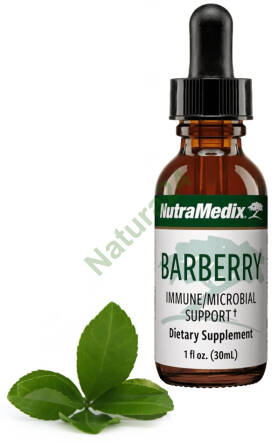



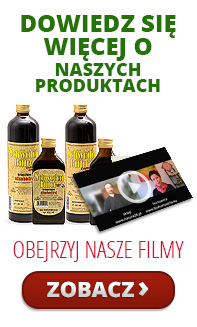
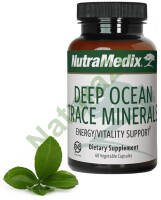
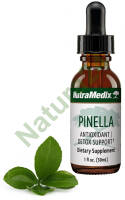
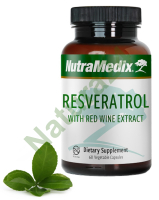
 Polish
Polish
 German
German
Wszystko przebiegło pomyślnie. Polecam!
SUPER KONTAKT, B. SZYBKA DOSTAWA, SUPER PRODUKT, SUPER SPRZEDAJACY - POLECAM BAAAARDZO
Z ogromną przyjemnością wystawiam komentarz POZYTYWNY!!! Wszystko sprawnie, miło i przyjemnie!!! Przesyłka ekspresowa.!!! GORĄCO POLECAM
Przesyłka wysłana w błyskawicznym tempie Juz na drugi dzień rano.Polecam w 100%.
olejek rycynowy rewelacyjny